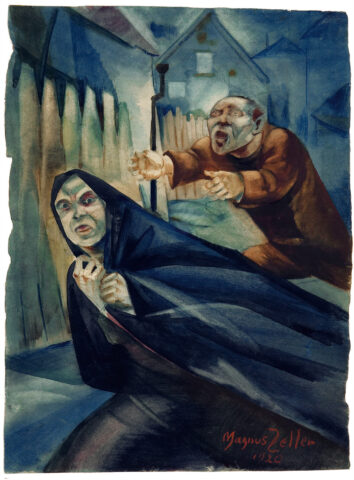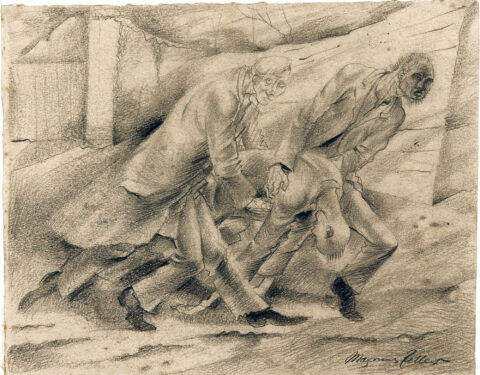Magnus Zeller
After his childhood as the son of a pastor in the Mansfeld region and in Magdeburg, Zeller moved to Berlin in 1906, where he studied painting from 1908 to 1911 at the “Studien-Ateliers für Malerei und Plastik” under Lovis Corinth. In 1913, he became a member of the “Berliner Secession” and the “Freie Secession”. During his military service (1915-18), he met Karl Schmidt-Rottluff and Stefan Zweig, for whose “Almanach der bösen Buben” he drew anti-military caricatures. Zweig wrote twelve poems for his first graphic cycle “Rapture and Revolt” (1917/18), which was published as a portfolio in 1920. Zeller was actively involved in the November Revolution as a member of the Workers’ and Soldiers’ Council and became one of its most important chroniclers. Shortly after joining the “November Group”, he moved into a studio in a medieval castle in Blomberg, the home of his first wife, interrupted only by a teaching assignment for graphic art in Dorpat in 1923 and 1924; however, he continued to spend the winter months in Berlin. Around 1925, the expressive cubist formal language gave way to a more objective style. Due to his anti-fascist beliefs and his work, which was ostracised as “degenerate”, he lived under constant threat during the National Socialist era. In 1945, he became a co-founder of the Kulturbund Potsdam and took part in numerous exhibitions. On the occasion of his 100th birthday in 1988, his work was honoured posthumously in a comprehensive exhibition at the Staatliche Galerie Moritzburg, Halle.





